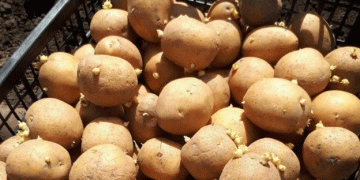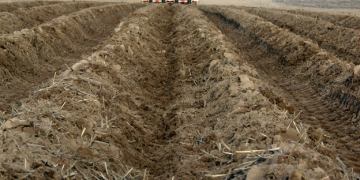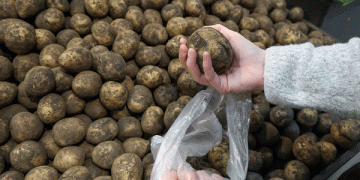Potato-producing states held 198 million hundredweight, or cwt, in storage on Feb. 1, down 3% from the same date a year ago, according to the USDA. In its Feb. 17 report, the USDA said potatoes in storage accounted for 48% of the potato states’ 2021 production compared with 49% a year earlier.

The indicated potato disappearance, at 211 million cwt, was down 2% from the same period last year. Season-to-date shrink and loss, at 15.8 million cwt, was 2% higher than the same time last year. Processors in the eight states used 114 million cwt of potatoes for the season, up 6% from February 2021.
State inventories
Potato stocks in Idaho totaled 70 million cwt, the USDA said, down 5.5% from a year ago. Washington state potato stocks of 40 million cwt on Feb. 1 were down 12% compared with a year ago. Colorado potato stocks of 11.2 million cwt were off 15% compared with a year ago.
On the other hand, Maine potato stocks totaled 11 million cwt, 64% more than the same time a year ago. Minnesota’s potato stocks of 10.4 million cwt were up 20% from year-ago levels, according to the USDA. The smaller inventories of fresh potatoes are finding higher prices this year, according to USDA data. Shipping point prices for size 70-count Idaho russet burbank potatoes were running $14-$17 per carton of 50 on Feb. 17, up from $7.50-$9 per carton the same time last year.

- Released February 17, 2022, by the National Agricultural Statistics Service (NASS), Agricultural Statistics Board, United States Department of Agriculture (USDA). Potato Stocks Down 3 Percent from February 2021 Potato States held 198 million cwt in storage on February 1, 2022, down 3 percent from February 1, 2021. Potatoes in storage accounted for 48 percent of the States’ 2021 production compared with 49 percent a year earlier.
- The indicated potato disappearance, at 211 million cwt, was down 2 percent from the same period last year. Season-to-date shrink and loss, at 15.8 million cwt, was 2 percent higher than the same time last year. Processors in the 8 States used 114 million cwt of potatoes for the season, up 6 percent from February 2021. Survey Procedures: The February 1 potato stocks estimate in this report are based primarily on a survey conducted in the first week of February in the potato producing States.
- The potato stocks survey is a probability survey that includes a sample of approximately 840 growers, processors, and storage facilities that are contacted to obtain the quantity of potatoes stored as of the first of the month, as well as monthly shrinkage and loss information. Monthly processing data is collected from a census of all known potato processing facilities in eight States (Colorado, Idaho, Maine, Minnesota, North Dakota, Oregon, Washington, and Wisconsin). An effort is made to obtain a report from all facilities.
- Estimates are made for missing facilities to make the survey complete. Data was collected by mail, internet, telephone, or personal interview to obtain information on potato stocks, monthly potato processing, and monthly shrink and loss. Estimating Procedures: Information obtained from the potato stocks survey, processing survey, and administrative data, is used to establish estimates of stocks, shrinkage and loss, and processing usage. These estimates are reviewed for errors, reasonableness, and consistency with historical estimates.
- Revision Policy: Stocks, shrink and loss, and processing estimates for the previous estimating period are subject to revision based on late and/or updated information. At the end of the marketing season, all information available, including disposition data, are thoroughly reviewed and any necessary revisions for the entire crop year are published in the Potatoes Annual Summary released in September.
- Reliability: Reliability of the stocks and processing data must be treated separately because the survey designs for the two surveys are very different. The stocks estimates are subject to sampling variability because all operations holding stocks are not included in the sample. This variability, as measured by the relative standard error at the United States level, is approximately 1.3 percent.
- This means that chances are approximately 95 out of 100 that the survey estimates for stocks will be within plus or minus 2.6 percent of the value that could be developed by averaging the estimates produced from all possible samples selected from the same population and surveyed using the same procedures.







